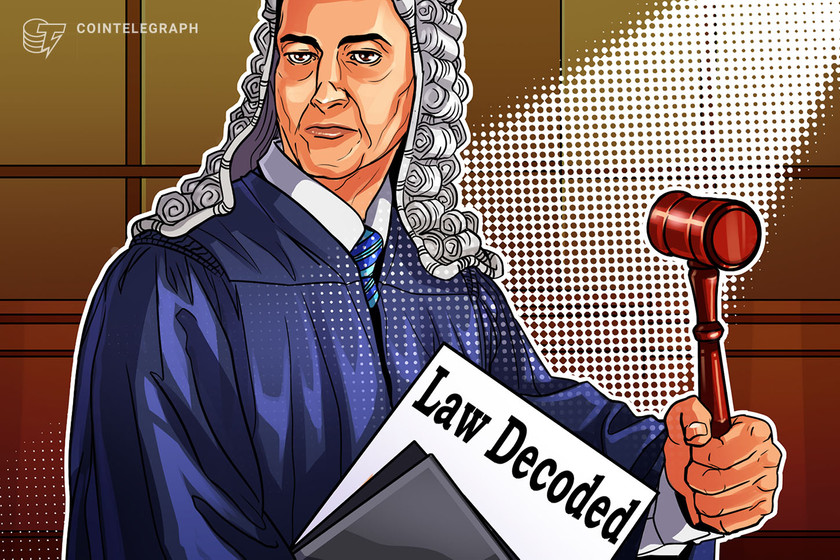How blockchain can address Austria’s energy crisis


In the future, energy communities should make a greater contribution to the energy transition.
Climate change has become one of the biggest global challenges for humanity. At the same time, the dependence on hydrocarbon energy sources such as coal, oil and natural gas is still strong.
Supply lines around these energy sources are further vulnerable to geopolitical tensions. Due to the current sanctions against Russia, experts now expect rising electricity prices and negative effects on the energy market in Europe.
The Austrian government understands the urgent need for the energy transition and has set the ambitious goal of being climate neutral by 2040. Alternative solutions to fossil energy have been slow to emerge and, for the most part, are not yet efficient enough on a large scale. But there are promising approaches — especially in the form of decentralized renewable energies or blockchain technology in peer-to-peer (P2P) energy trading.
There are already pilot projects in Austria dealing with P2P trading on the energy market. At the forefront are blockchain scale-up Riddle&Code and Austria’s largest energy provider Wien Energie, which founded a joint venture in 2020 called Riddle&Code Energy Solutions.
As of April 1 of this year, Kai Siefert is the new head of the joint venture. He was formerly an IT strategist at Wien Energie and worked on the energy tokenization platform MyPower in Vienna. Cointelegraph auf Deutsch caught up with Siefert to ask how we can combat the energy crisis with the help of blockchain.
From pilot project to solar tokenization
Wien Energie and Riddle&Code have been working together for a long time. Back in 2017, the companies launched the first project called Peer2Peer in Quartier where they tokenized photovoltaic solar systems so that consumers can participate in energy production.
Later, at the end of 2018, when Siefert was still Wien Energie’s IT strategist, his team developed a blockchain strategy together with Astrid Schober, head of IT at Wien Energie, and focused on the topic of energy tokenization with security tokens and utility tokens.
This resulted in the MyPower platform. First, Wien Energy and Riddle&Code tested the decentralized trading of self-generated solar power via blockchain in a smart city project with 100 participants. Everything went smoothly, and in 2021, a tokenization platform for photovoltaic plants was launched. Riddle&Code tokenized the largest solar plant in Austria and gained 1,000 customers who, as part of its advertising campaign, bought energy vouchers issued by Wien Energie in the form of tokens, which could be used to pay electricity bills.
Now MyPower tokenizes solar photovoltaic assets across the whole of Austria, allowing consumers to benefit from partial ownership and invest in renewable energy sources.
Demand for renewable energy is huge
According to Siefert, the concept of energy sharing is very much in demand at the moment. Due to Russia’s invasion of Ukraine and the coronavirus crisis, electricity prices are skyrocketing. Rising energy prices can be mitigated with cheaper renewable energies, smart information technology and energy sharing.
Recent: Not just Bitcoin price: Factors affecting BTC miner profitability
With blockchain-based energy sharing, jointly generated electricity is fed into the grid, distributed and sold directly to flats — all without an intermediary. Kilowatt-hours not consumed can also be sold to other energy communities, and thus, consumers earn or save money.
Energy sharing can enable direct energy trading between energy consumers (energy producers and end-consumers), who can use this approach to take control of their generation and demand. People who rent instead of owning their homes can actively participate in the energy transition and benefit from the proceeds. This gets consumers more involved in their own generation and puts local value creation at the center.
“You don’t need to buy natural gas from Russia or oil from Saudi Arabia to create energy here in Europe,” Siefert said. “The sun comes virtually for free and reliably produces electricity. But many people can’t participate because they don’t have their own house, but live in a rented flat or simply don’t have the means to buy a large solar system. However, we can divide these plants into small digital asset tokens so that private investors with little capital can also participate.”
Renewable energies “are coming into focus”
In Austria, there are already small renewable energy communities such as Erneuerbare-Energie-Gemeinschaften (EEG). Such energy communities (in Austria and according to the Renewable Energy Expansion Act) are nonprofit-orientated legal entities intended to decentralize the generation, distribution and consumption of renewable energy mainly for the public benefit. Such EEGs still play a small role in production, local and regional distribution, and consumption of renewable energy and are often not very profitable.
However, things are starting to develop. According to Siefert, the demand for EEGs has already increased enormously due to rising energy prices, and Riddle&Code Energy Solutions offers technical solutions for setting up and onboarding such EEGs. “We can also connect them to decentralized marketplaces with our system,” Siefert said. This is already possible with the Renewable Energy Expansion Act, which has been in force since 2021 and is a European Union directive that has been transposed into national law.
Siefert noted an “increasing interest in interesting in renewable energies” — in Austria, Europe and worldwide. Companies working in the field of renewable energies “are now coming into focus,” as they are benefiting “from the large investments favored by climate policy worldwide,” Siefert said.
Real-time data signed and encrypted on the blockchain
At the moment, P2P energy trading is not yet allowed in Austria. Everything works on the basis of the current electricity market infrastructure, and billing data is made available by the grids 24 hours after it has been measured.
But Riddle&Code Energy Solutions can already take this data in real-time. A dongle that can be connected directly to the smart meter reads data live from the customer interface and sends it via a trusted gateway — signed and fully encrypted on the blockchain. From there, this data can be read out immediately. Customers can see every quarter of an hour how their credit grows in kilowatt-hour tokens.
Recent: Proof-of-time vs proof-of-stake: How the two algorithms compare
This data cannot be used for billing yet, but it helps to incentivize the right consumption behavior. Thanks to such data, the customer can see how much green energy they have on the grid from the community installation and, for example, use this time to turn on the washing machine or charge an electric car. This, in turn, has an indirect effect on the bill because customers then pay less if they use more electricity from their own shared forms.
“Our goal is that everyone can participate in energy sharing,” Siefert said. “But private P2P trading is currently not possible in Austria until legal regulation is created. That is why I would like to see more freedom here from the government side and more speed in the expansion of renewables. Austria can become one of the leading nations in the EU and worldwide in terms of P2P energy trading and the development of energy communities.”
This is a short version of the interview with Kai Siefert. You can find the full version here (in German).






















